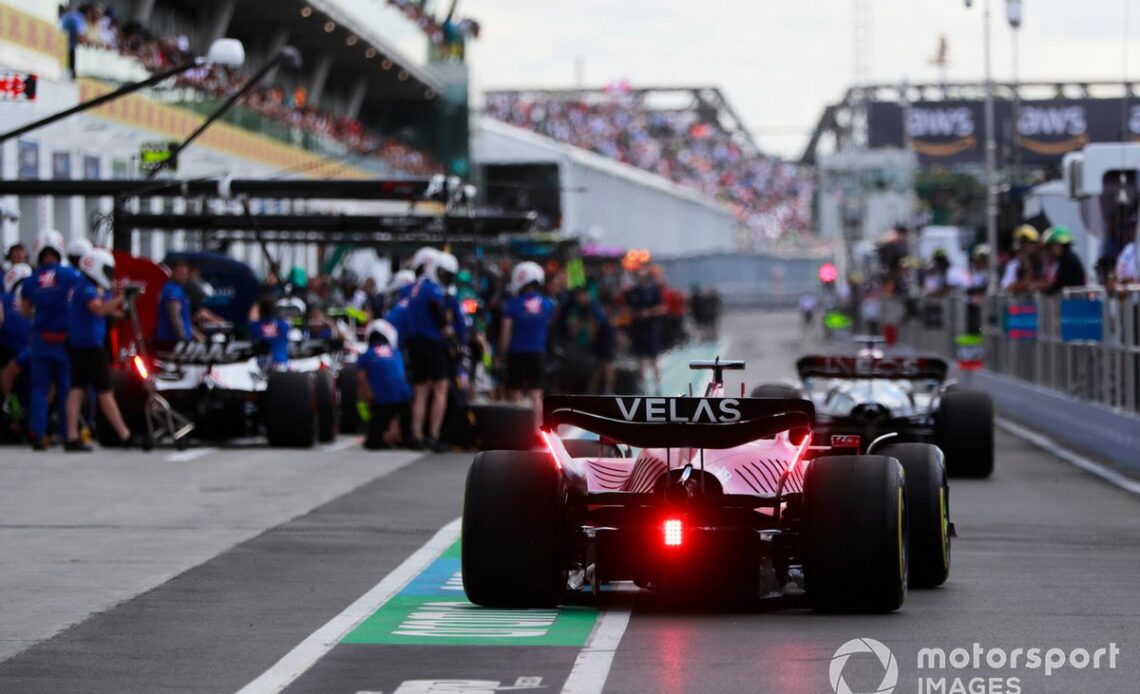From the Paul Ricard event, the FIA will be measuring what it officially calls aerodynamic oscillations – and cars that do not comply will potentially face exclusion from races.
And at the heart of the FIA’s clampdown is a metric in the form of a complex equation that looks like something written by Stephen Hawking or Albert Einstein, and which teams will now have to understand and comply with.
The porpoising clampdown was first signalled in a technical directive issued by FIA single-seater technical boss Nikolas Tombazis on the eve of the Canadian GP, amid some controversy about the timing.
Following discussions with the teams, notably with all the technical directors at a recent FIA technical advisory committee meeting, that TD has now been superseded.
An updated version was issued to teams in draft form on Thursday, and it was missing any reference to the extra floor stays that became such a contentious issue in Canada.
The significance of it being a draft version is that Tombazis remains open to receiving feedback from the teams by July 12th – but he stresses that the substance of it is unlikely to change, and thus teams have to prepare for it to come into force for France.
George Russell, Mercedes W13, Charles Leclerc, Ferrari F1-75, in the pit lane
Photo by: Steven Tee / Motorsport Images
In the TD, Tombazis reiterated what he said in the earlier version, that safety is the key consideration of the exercise – and that allows the FIA to introduce rule changes.
“It has become increasingly apparent from driver comments that excessive aerodynamic oscillations and/or car grounding can lead to severe pain, headaches, or loss of concentration, with the potential to cause a high-speed accident,” he writes.
“They may also reduce the controllability of the car, thus increasing the chance of an accident. The FIA has therefore concluded that cars with excessive oscillations or high levels of grounding may be deemed to be of a ‘dangerous construction’, the term ‘construction’ here extending to cover matters such as the aerodynamic configuration of the car, or its mechanical set-up.”
He stresses that under both the F1 technical regulations and the international sporting code “the stewards may disqualify a vehicle whose construction is deemed to be dangerous.”
He then adds: “While in the future the FIA will consider implementing measures that will reduce the propensity of cars to exhibit such aerodynamic oscillations, in the short term, the FIA…
Click Here to Read the Full Original Article at Motorsport.com – Formula 1 – Stories…

